Whether you’re traversing rugged terrain. Or moving through maze-like streets with your dirt bike, you want to be sure you do not ride into trouble with the law. Dirt bikes are not regular motorcycles. So, you can’t ride them everywhere. Hence, the questions, Where can I legally ride my dirt bike? Can you ride a dirt bike on the street? Can you ride a dirtbike in your neighborhood?
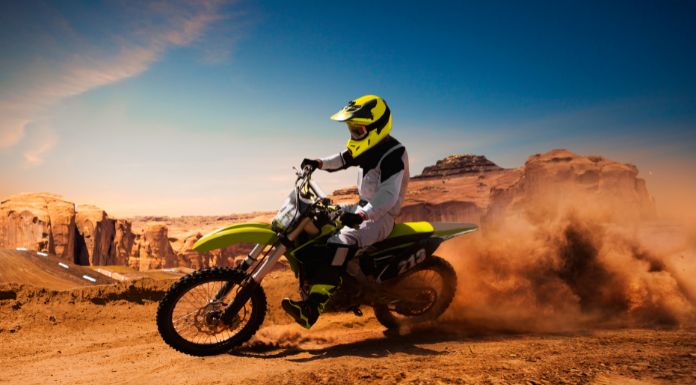
If your private property is remote and secluded, you have the option to ride your dirt bike on it. This is so you don’t disturb your neighbors. Other places you can ride your dirt bike legally include some off road trails, motocross tracks and BLM (government managed) land. You can also search for free dirt bike trails near me. Other adventurous riders explore riding on converted railroad tracks. They also ride on ski hills in their off-season, and even dunes.
You’ll learn in this article where to ride and where to avoid. Let’s dive in.
Off-Road Riding Areas
In the motorcycle world, you can ride bikes either on the road or off-road. People refer to these activities as street riding and off-roading, respectively. These are some peculiarities to each way of driving.
Off-roading is an activity that involves driving on unpaved surfaces. To enable this, manufacturers construct off-road motorcycles differently than on-road bikes. This enables them to navigate the sometimes varying terrain characteristic of off-road paths.
Some off-road bikes are used in competition racing bikes. Thus, the dirt race tracks must be intentionally designed.
“…well-established circuits are the best bet.”
Ben Watson – Top British rider
This need has led to the creation of off-road riding areas.
What Classifies as Off-Road Riding Area
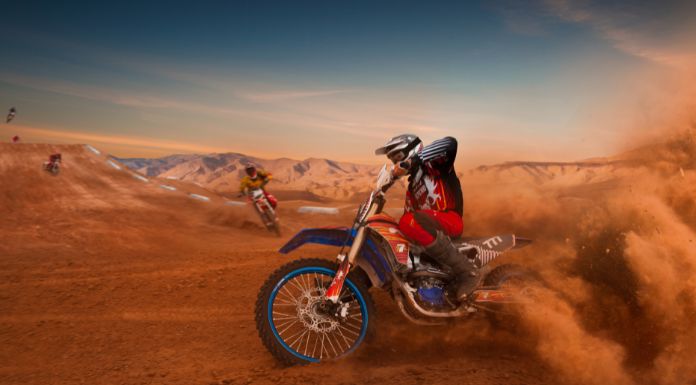
The off-road riding area is a controlled environment. Recreational and motorsport off-road activities can take place there. These locations provide a suitable environment for enthusiasts to engage in off-road adventures. You can also use these areas to explore the capabilities of their bikes.
But, what classifies as an off-road riding area? Authorities apply multiple criteria to determine whether an area qualifies as an off-road riding area. They include:
Legal designation
To facilitate off-road activities, it is necessary to legally designate and map the area for such purposes. Most off-road trails span over large landscapes. Thus, ensuring the legality of such a setup is important. Private individuals or government agencies may own or manage the designated land.
Terrain diversity
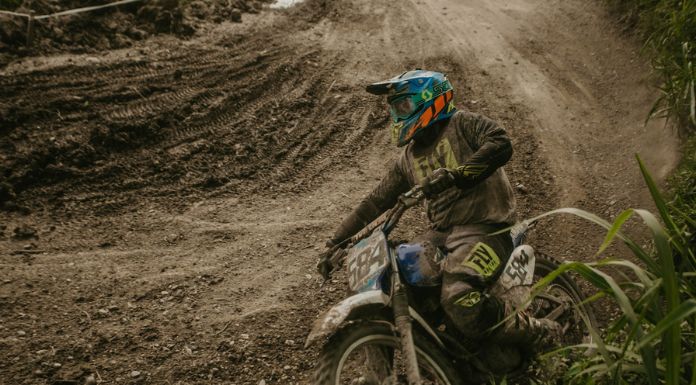
Having a diverse range of terrain is characteristic of most off-road riding areas. This provides an environment that can cater to the different skill levels of riders. They can also test their bike capabilities. It gives riders the challenge they can use to train for competition races.
Safety measures
An off-road riding area must adhere to and/or enforce safety measures. This is to protect the well-being of the riders. These measures include mandatory safety gear and maintaining speed limits.
Examples of Off-Road Riding Areas
Off-road riding areas encompass various locations, including but not limited to:
National Parks, Forests and Trails
Government agencies oversee the management of national parks and forests. The parks are not accessible for off-road riding. This is to protect the natural environment and wildlife there. But some parks have designated areas for off-road recreational activities. Authorities closely monitor these areas to ensure compliance with the specified regulations. They minimize environmental impact.
State Parks and Recreational Areas
The state government manages state parks and recreational areas, which are public lands. In these areas, there are trails where off-road riding activities can take place. There is a range of terrains and landscapes. Enthusiasts can enjoy a diverse riding experience.
Private Off-Road Parks
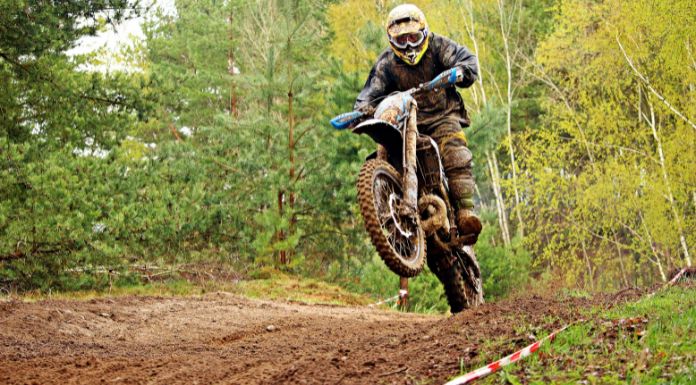
Private individuals or entities own certain off-road riding areas or parks, which are established on land exempt from government regulations. This allows the owners free reign over trail design and access requirements. Some owners set up membership clubs for enthusiasts. Access may be based on a day fee, or a monthly or annual subscription.
Legal Requirements for Riding Off-Road
The legal requirements for off-road riding vary. This variation depends on the country, state, or region. For instance, the rules for off-road riding in Australia will be different from what it is in the US. Also, within the US it could differ from state to state. Thus, it is important to get familiar with the laws and regulations of the jurisdiction you are riding in.
Importance of following Legal Requirements for Off-Road Riding
It is important to follow legal requirements for off-road riding due to the following reasons:
- To prioritize safety. This ensures riders have the necessary skills and license to drive. This includes the use of safety gear to operate off-road bikes.
- To avoid penalties and legal issues. Non-compliance with legal requirements can result in fines, penalties, and even legal repercussions.
- To prevent being a personal liability. The legal requirements for off-road riding guard riders against the cost of accidents. Achieving this is possible through the use of insurance. Insurance provides coverage in the event of such accidents or injuries.
Age Restrictions
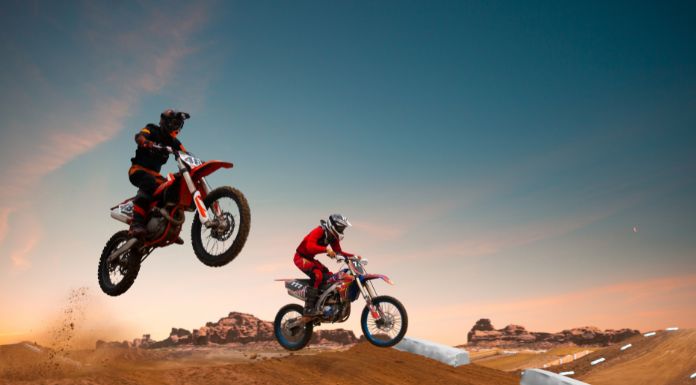
To promote safe and responsible riding, authorities establish age restrictions for off-road riders. Off-road trails can be treacherous. These areas feature obstacles that require a certain level of cognitive maturity to navigate.
Thus, the age restrictions dictate a minimum age requirement for riding. Or this age restriction can play up when seeking licensure. Such regulations safeguard younger riders. They prevent inexperienced persons from engaging in risky off-road activities.
Licensing and Registration Requirements
Do you need a license to ride a dirt bike off-road? Many regions require off-road bikes to undergo registration. This entails obtaining the necessary permits and license plates. Some regions may mandate the presentation of insurance documents. This ensures financial protection in case of damages.
Granting and regulating licenses is equally important. It ensures that riders have the skills and knowledge to overcome challenging terrains. Some jurisdictions insist on such a license. While some are more lax with this requirement.
Safety Equipment Requirements
It’s no news that safety is a top priority in off-road riding. Safety gear plays a crucial role in protecting riders during off-road adventures. The use of helmets, goggles, boots, and protective clothing is necessary. They ensure that riders are sufficiently protected against potential injuries that may arise during off-road riding.
On-Road Riding Areas
Just like there are off-road riding areas, there are on-road riding areas. They refer to places where street-legal dirt bikes can ply on. The term, ‘street-legal’ is used for dirt bikes ridden on-road. Yet, the streets are not the only places qualified to be on-road areas.
In general, all paths or roads that are accessible to the public can be on-road riding areas. They include streets, public roads, and essentially most paved surfaces.
It is important to note that sidewalks are not on-road riding areas. They are designed for pedestrian use and not for dirt bike riding. Also, all dirt bikes used in on-road riding areas are subject to traffic laws.
Examples of On-Road Riding Areas
If you are wondering, where can I ride my dirt bike for free, here are a few examples of on-road riding areas:
- Streets
- Highways
- Backroads
Laws and Regulations for Riding Dirt Bikes on the Road
In their stock form or factory-made, dirt bikes are not street-legal. This means they cannot be used for on-road riding activities. Riders who want this functionality go ahead to meet certain requirements. This enables them to ride their dirt bikes on the road.
These requirements include having:
- A headlight and taillight
- Mirrors and brake light
- Turn signals and a horn
- A valid driver’s license
- License plate
- Insurance
- Registration requirements like age. You may be asking, can a 14 year old drive a dirt bike on the road? Your local law will let you know the age restriction on registering a dirt bike and riding one.
Safety Equipment for On-Road Riding
Like with all kinds of riding, safety is important. Thus, the place of safety equipment in on-road riding cannot be overstated. They protect the rider as much as they protect other users on the road.
Traffic laws in most places are the same. But, it would do you a world of good to get familiar with local traffic laws in your region. Take note of speed limits in different areas and adhere to these regulations. This will ensure legal and safe riding on public roads.
Risks of Illegal Riding
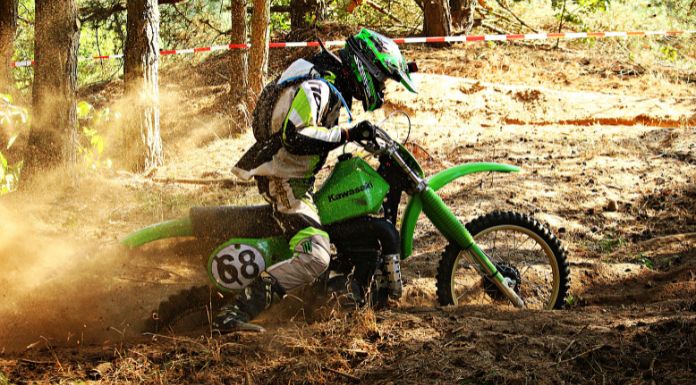
There are several negative consequences and risks to engaging in illegal riding. Be it on-road or off-road, these risks can affect not just the rider but also others.
Here are some of the risks of riding dirt bikes illegally:
Loss of Privileges
If an individual violates the regulations of riding, their license can be revoked. They may also face long-term restrictions or bans from using off-road areas. This can even extend to not participating in organized events. Thus, limiting their riding opportunities.
Potential Legal Consequences
Beyond the risk, there are fines and penalties for illegal riding. What is the fine for riding a dirt bike on street? You could stand the risk of having your dirt bike impounded if you flaunt riding regulations. Authorities enforce these laws and regulations to ensure public safety. They equally protect the environment. Violating them can even lead to criminal charges being raised against you.
Environmental Impacts of Illegal Riding
Riding in unauthorized areas can destroy the natural environment there. Off-road riding can damage vegetation and disrupt the habitat of animals. This is especially so if riding takes place illegally. This degrades the landscape and can threaten biodiversity.
Poor Public Perception of Dirt Bike Riders
Dirt bikes are known for their noisy engines. This is especially true for 2-strokes engines in a 65cc dirt bike. Illegal riding can contribute to a negative perception of dirt bike riders.
“If you have a dirt bike…, they associate you with being a bad person“
Benjamin Charles – Harlem dirt biker
Using off-road motorcycles on street roads endangers the lives of the rider. It also puts others at risk of accidents. This can cause complaints that may culminate in access restrictions to public land.
The Bottom Line
Adventure is good. But staying on the right side of the law is more important. The intricacies of legal riding requires a keen understanding of local legal requirements.
Asking, ‘Where can I ride my dirt bike legally near where I live?’ is a good place to start. Responsible riders recognize the importance of adhering to regulations. They can then prioritize safety, avoid legal issues and protect the environment.
Frequently Asked Questions on where to ride dirt bike legally
Can you ride a dirt bike on the sidewalk?
Riding a dirt bike on the sidewalk is illegal and prohibited. Sidewalks are designated for pedestrian use. Riding a bike in such areas compromises the safety of pedestrians. It puts even you, the rider, at risk of getting into an accident.
Can you ride a dirt bike on the road?
In most countries including the United States, it is illegal to ride a dirt bike on public roads. Dirt bikes are built for off-road use. So, to use them on the streets, they must be modified to meet specific safety requirements. These dirt bikes are then said to be street-legal.
It is best to check what local laws in your state or country stipulate on the use of dirt bikes. These safety requirements include putting a headlight, taillight, and even turn signals. You can also buy a stock dual-purpose dirt bike that is street legal and also has off-roading capabilities.
Where can you ride a mini bike?
Specific regulations about where you can ride a mini bike vary. But, in general, mini-bikes are not allowed on public roads. They can be ridden on private property or designated off-road areas. These off-road areas include but are not limited to motocross tracks or dirt bike trails.
Can you ride a 50cc dirt bike on the road?
Like all other dirt bikes, whether you can ride a 50cc dirt bike on the road depends on your location. The laws regulating the use of dirt bikes on public roads vary in different countries. This variation can stem from regulations on safety measures and insurance policies. Even licensing requirements can determine if you can ride a 50cc dirt bike on the road.
Can I drive a dirt bike on the local streets?
No, you cannot drive a dirt bike on the local streets. This can endanger the locals in the street. But, an exception can be made if you comply with local regulations on the use of dirt bikes on local streets. This usually involves obtaining the necessary license and sometimes, making bike modifications.
Can you ride dirt bikes in Pennsylvania?
Yes, you can ride dirt bikes in Pennsylvania. But this must be done in designated areas not on city streets. These areas include some public trails, motocross tracks, and even private off-road parks.
Can you ride dirt bikes in Massachusetts?
With proper authorization, you can ride dirt bikes in Massachusetts. There are lots of trails in Massachusetts for just dirt bikes.
Can you ride dirt bikes on the road in Texas?
No, you cannot ride dirt bikes on the road in Texas. Most dirt bikes are not street-legal in Texas. This includes motocross, enduro, and cross-country bikes. Only dual sport bikes are the off-road motorcycles that are legal for use on Texas roads. The other bikes must be ridden in designated areas.
Can you ride dirt bikes on the road in Florida?
Yes, you can ride dirt bikes on the road in Florida. But they must first be made street-legal. This involves it being registered and fitted with the proper equipment. All for safety purposes.
Can you ride dirt bikes on the road in NY?
No, you cannot ride dirt bikes on the road in New York City (NYC). The dirt bikes are not street-legal in NY.
Can you ride dirt bikes on the road in California?
You cannot ride dirt bikes on the road in California. They are classified as off-highway vehicles (OHV) in California. To ride on OHV trails, your dirt bike must be compliant with the emission regulations of the state.

